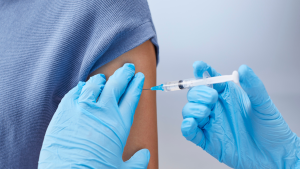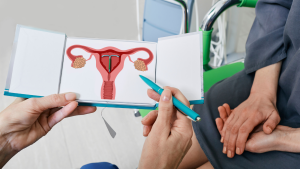
FDA Approves New Version of PrEP—Just Two Shots A Year
The FDA has approved lenacapavir as a form of pre-exposure prophylaxis (PrEP), offering a new option for HIV prevention requiring only two shots per year.
Mgen: The STI You’ve (Probably) Never Heard of
It has been associated with urethritis in men and linked to cervicitis and pelvic inflammatory disease (PID) in women. In one study of young men and women, it was found to be more common than gonorrhea infection. But odds are you’ve never been tested for, or even heard of, this sexually transmitted bacterial infection.
Mycoplasma genitalium, or Mgen, was first identified in 1981. It is a bacterium that can infect the reproductive tract and is passed on through sexual contact. In men, infection with Mgen can cause urethritis (swelling and irritation of the urethra), and in women it has been linked to cervicitis (inflammation of the cervix), PID, and possibly infertility.
While there aren’t statistics to show how common infection with Mgen is, in one study of 2,932 young men and women, Mgen was more prevalent that gonorrhea, but less than chlamydia and trichomoniasis. Like those infections, Mgen can be asymptomatic, particularly in women. Women may have pain with urination, vaginal discharge, or discomfort with sex, while men may experience burning, painful urination and sometimes a discharge from the penis.
There are currently two FDA-approved diagnostic tests for Mgen. Labs can use a specific type of test method—nucleic acid amplification testing (NAAT)—to identify an Mgen infection. Testing can be done on urine, cervical swabs, or urethral swabs.
Since Mgen is a bacterial infection, it can typically be cured with antibiotics, sometimes with a single dose. Occasionally, if a first course of antibiotics doesn’t cure the infection, an additional antibiotic treatment may be required.

The FDA has approved lenacapavir as a form of pre-exposure prophylaxis (PrEP), offering a new option for HIV prevention requiring only two shots per year.

On a recent episode of Love Island, a cast member sugested that we could blame our current STI epidemic on men who had sex with animals. She pointed to koalas with chlamydia as an example. There’s some truth here, but also a lot of misinformation.

A new report from the Centers for Disease Control (CDC) shows that we’re missing opportunities to prevent congenital syphilis and save lives.

Currently, condoms are the only widely available, proven method for reducing transmission of HIV and other sexually transmitted infections (STIs) during sex. Condoms work.

Anal sex may have once been thought of more taboo than other sexual behaviors, but today we know it’s a perfectly normal way to find sexual pleasure.

It’s time to celebrate the start of summer! June is filled with national observances to help you start the summer off right. We’re here to help make June the start of a #safesexysummer.

There’s potential good news in gonorrhea prevention as a series of studies suggests that certain meningococcal B (MenB) vaccines can reduce the risk of gonorrhea.

There is new guidance on pain management for IUD insertion and acknowledgement that providers often underestimate the pain patients feel during their procedures.
ASHA believes that all people have the right to the information and services that will help them to have optimum sexual health. We envision a time when stigma is no longer associated with sexual health and our nation is united in its belief that sexuality is a normal, healthy, and positive aspect of human life.
ABOUT
GET INVOLVED
ASHA WEBSITES
GET HELP
© 2025 American Sexual Health Association